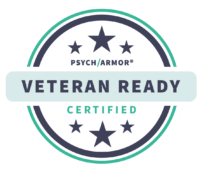Factors That Contribute to Alcohol Addiction
 Decades of stigmas related to how people develop drug and alcohol addiction created a great misunderstanding of this brain disease. But valid addiction science continues to cut through the clutter to present facts that lead to evidence-based treatment and more effective results. Here’s what you should know when seeking help for yourself or someone you love.
Decades of stigmas related to how people develop drug and alcohol addiction created a great misunderstanding of this brain disease. But valid addiction science continues to cut through the clutter to present facts that lead to evidence-based treatment and more effective results. Here’s what you should know when seeking help for yourself or someone you love.
Risk Factors That Often Lead to Alcohol Addiction
Not a single one of us responds to life’s circumstances the exact same way. Nevertheless, researchers have strived to understand the contributing factors to alcohol addiction.
For example, numerous studies involving twins help demonstrate how even with the same genetic predisposition for addiction, one sibling may never develop alcohol use disorder (AUD) while the other might. The greatest risk factor for addiction—approximately 50 percent—is genetics. But just because you have a predisposition for AUD doesn’t automatically mean you’ll develop the condition.
The Substance Abuse and Mental Health Services Administration indicates both risk factors and protective factors play a part in addiction occurrence or prevention. Here’s how the agency explains it:
- “Risk factors are characteristics at the biological, psychological, family, community, or cultural level that precede and are associated with a higher likelihood of negative outcomes.
- “Protective factors are characteristics associated with a lower likelihood of negative outcomes or that reduce a risk factor’s impact. Protective factors may be seen as positive countering events.”
Let’s examine how these factors contribute to alcohol addiction.
How Might Someone Develop Alcohol Use Disorder?
So, let’s say identical twins grew up in a household with parents who not only had AUD, but also a grandmother who had bipolar disorder and an uncle who suffered from depression. Mental illnesses can also be inherited and are contributing risk factors for addiction. Additionally, the twins suffered trauma as young teens when their parents died in a car crash. Without other family members who could care for them, they were separated and placed into different foster care homes. All of these circumstances are considered risk factors.
Twin A continued to have challenges, as they were in an overcrowded foster home with many children and not enough attention from their guardians. They also didn’t receive therapy to help process grief in a healthy way and, to cope with depression, started skipping school with friends and getting drunk. Environmental influences and early peer pressure are additional risk factors, and after repeated compulsive drinking behavior, Twin A developed AUD.
Twin B had foster parents who were kind, attentive, and focused on helping them recover from their difficult upbringing. They ensured access to grief counseling, talked openly about the dangers of alcohol and drugs, helped Twin B engage in progressive school activities, and provided a calm and supportive home life. These are considered protective factors. As a result, Twin B adjusted to a new way of life, healed from past tragedies, and didn’t use substances.
In this scenario, genetics aren’t the only threatening risk factor—but also not a guarantee of addiction. While it’s indeed true that both Twin A and Twin B initially had the power of choice to use alcohol, they certainly didn’t choose to develop AUD. This brain disease isn’t the result of a morality fault or a lack of willpower: there are always underlying reasons. Consequently, without essential protective factors in place, anyone struggling with aspects of life, past or present, is at risk.
Symptoms of Alcohol Use Disorder
Just the fact that you or a loved one are evaluating your drinking behaviors is a step in the right direction. According to the National Institute on Alcohol Abuse and Alcoholism, here are the symptoms of AUD, which we provide verbatim.
In the past year, have you:
- Had times when you ended up drinking more, or longer, than you intended?
- More than once wanted to cut down or stop drinking, or tried to, but couldn’t?
- Spent a lot of time drinking? Or being sick or getting over other aftereffects?
- Wanted a drink so badly you couldn’t think of anything else?
- Found that drinking—or being sick from drinking—often interfered with taking care of your home or family? Or caused job troubles? Or school problems?
- Continued to drink even though it was causing trouble with your family or friends?
- Given up or cut back on activities that were important or interesting to you, or gave you pleasure, in order to drink?
- More than once gotten into situations while or after drinking that increased your chances of getting hurt (such as driving, swimming, using machinery, walking in a dangerous area, or having unprotected sex)?
- Continued to drink even though it was making you feel depressed or anxious or adding to another health problem? Or after having had a memory blackout?
- Had to drink much more than you once did to get the effect you want? Or found that your usual number of drinks had much less effect than before?
- Found that when the effects of alcohol were wearing off, you had withdrawal symptoms, such as trouble sleeping, shakiness, restlessness, nausea, sweating, a racing heart, or a seizure? Or sensed things that were not there?
Seek Help at Seabrook’s New Jersey Facilities
At this point, it might be helpful to do a self-test of your condition. There’s no need to wait until hitting the proverbial “rock bottom” before getting the quality care you deserve. Talk to a member of our admissions team today.




